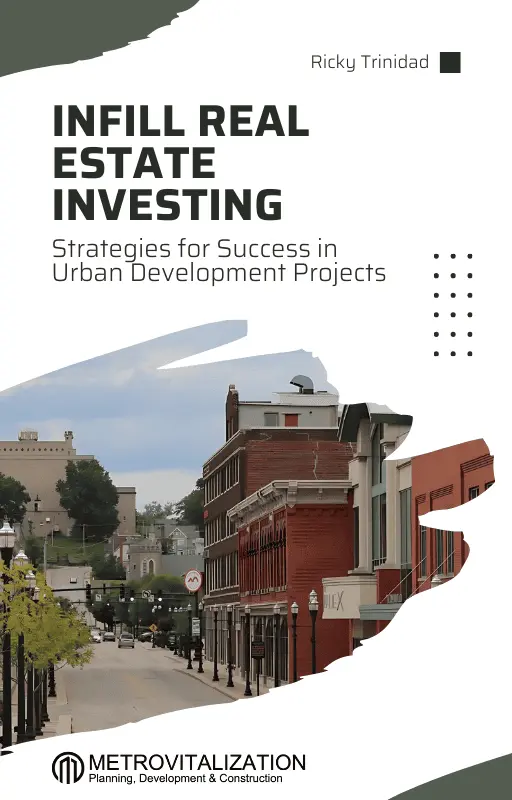Download the FREE e-Book HERE (full version) or just scroll down to read it below.
Chapter 1: Introduction
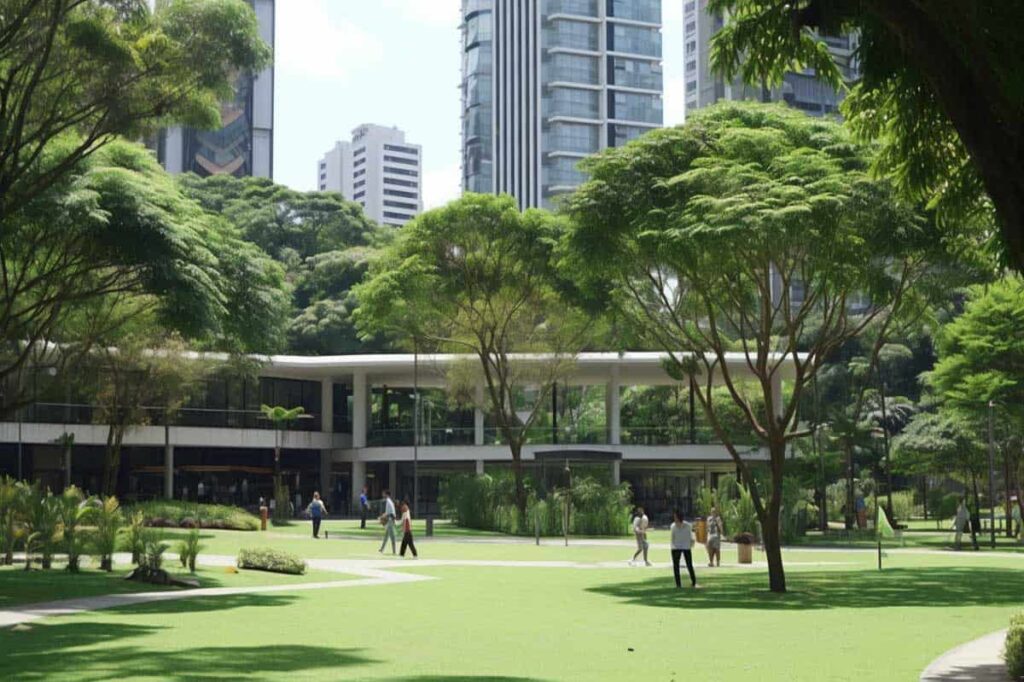
The Importance of Infill Real Estate Development
Infill real estate investing is a crucial component of urban planning and development that spurs the redevelopment or reuse of existing land within a built-up area, rather than expanding outwardly into undeveloped land. This type of development is essential for creating sustainable and vibrant communities, as it promotes density, walkability, and access to public transportation, and it can be a profitable endeavor for investors. By utilizing existing infrastructure and amenities, infill development helps to reduce urban sprawl and preserve valuable green space.
I’ve experienced firsthand the transformative power of infill real estate investing through the development of numerous urban communities in multiple U.S. markets during my 27 years as an urban planner, real estate developer, and builder. I’ve witnessed new life injected into neglected neighborhoods; the creation of new jobs, pocket parks, the beautification of areas, and the benefits of businesses and families as a result of infill development projects that I have been involved with. These projects have not only improved the aesthetic appeal of their communities but also bolstered the local economy and enhanced the overall quality of life for residents.
Basic Steps for Development Small Infill Projects
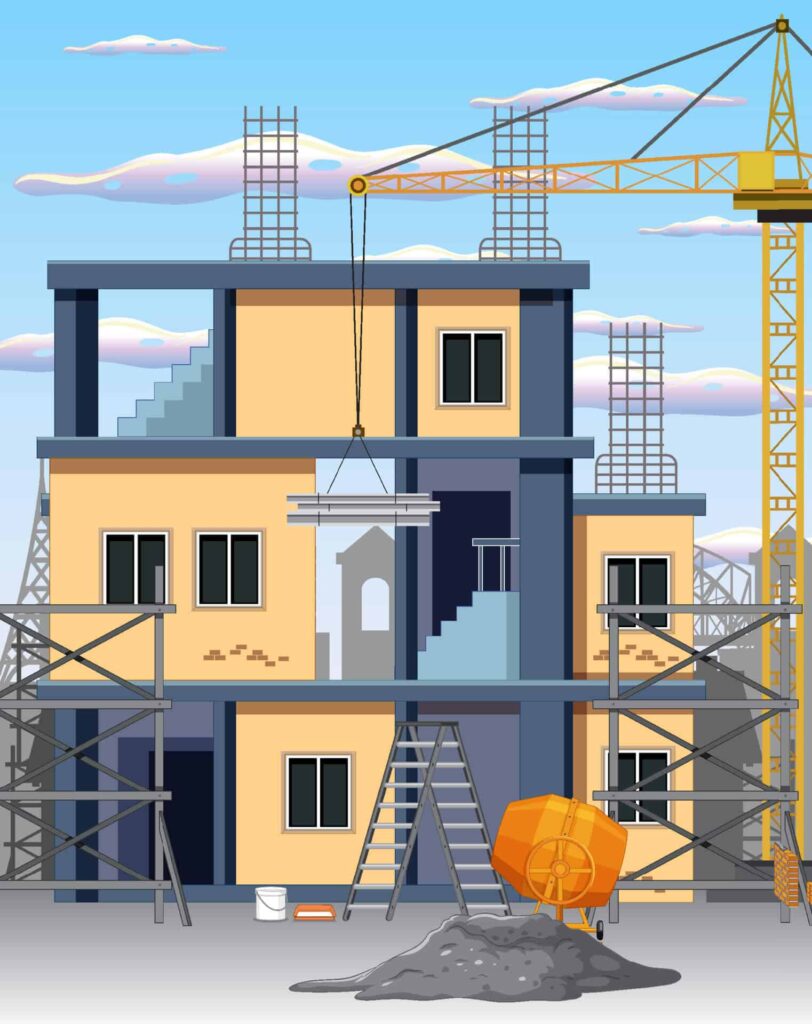
There are some basic steps to follow for anyone interested in deploying a successful infill development project in an urban area:
1. Identify suitable infill sites: Conduct thorough market research to identify vacant lots, underutilized properties, or abandoned buildings within your target urban area that have the potential for redevelopment.
2. Assess zoning and regulatory requirements: Work closely with local government officials to understand the zoning and regulatory landscape, and ensure your proposed project aligns with the community’s vision and development goals.
3. Secure financing: Explore various financing options, including traditional bank loans, government incentives, and private financing, to fund your infill project.
4. Design for sustainability and community integration: Incorporate sustainable design practices and ensure your project seamlessly integrates with the surrounding neighborhood, both aesthetically and functionally.
5. Engage with the local community: Actively involve residents, businesses, and other stakeholders in the planning and development process to build support and address any concerns.
6. Manage the construction process: Collaborate with experienced architects, engineers, and contractors to ensure the successful completion of your infill project.
7: Deploy and manage effective operations: Establish and oversee the sales, leasing, and property management frameworks and procedures for the project. Additionally, coordinate with marketing and management professionals to collaborate with you upon the project’s completion and stabilization post-construction.
By following these steps and leveraging the resources available to you, you can effectuate or participate in a rewarding infill real estate development endeavor and contribute to the revitalization of your urban community. If you would like to learn more about my approach to infill development, I invite you to visit my company’s website at www.metrovitalization.com and join my blog at www.metrovitalization.com/blog.
Overview of Urban Markets

In urban markets, infill real estate development maximizes the use of limited land resources while revitalizing target areas. In this subchapter, I’ll provide a brief overview of the key concepts and strategies involved in infill real estate investing, with a focus on urban markets.
I view infill development as a form of “impact investing” — a means to both enhance your community and local area while also generating profit. My strategy carries a community-centered style similar to non-profit initiatives, yet it incorporates a profit-driven mindset due to the meaningful financial benefits of my projects.
One of the main advantages of infill development in urban markets is its ability to promote sustainable growth by utilizing existing infrastructure and amenities. By building within
already developed areas, developers can reduce the need for new infrastructure, minimize urban sprawl, and promote walkability and public transit use. This approach can help create vibrant, mixed-use neighborhoods that cater to a variety of needs and lifestyles.
Mixed-use infill development is a key aspect of urban markets, as it allows for the integration of residential, commercial, and recreational spaces within a single development. This can help create dynamic, live/work/play environments that attract a diverse range of residents and businesses. The value the area can be maximized and become more resilient, and adaptable to withstand changes in market conditions when infill mixed-use development strategies are incorporated into urban revitalization projects.
Infill residential development is another important component of urban markets, as it can help address the growing demand for housing within urban areas. As the housing supply increases due to new infill residential developments, housing costs tend to reduce based on the principle of supply and demand. This dynamic naturally attracts new families and businesses to the community. Infill residential development can also help preserve historic buildings and structures while promoting sustainable design and construction practices.
Infill commercial development is yet another key aspect of urban markets, as it can help create vibrant, business corridors that support local companies and foster economic growth. The development of new commercial spaces within existing an urban area automatically spurs job creation attracts more businesses to the area and promotes local entrepreneurship. Infill commercial development can also help reduce the need for car travel, promote pedestrian activity, and support local cultural and social activities.
Overall, infill real estate investing in urban markets offers a range of benefits for developers, investors, and communities, and can help create more sustainable, resilient, and vibrant urban environments for future generations. At Metrovitalization, we’re launching a dedicated Urban Infill Development Division in 2024 aimed at revitalizing a specific downtown district in an area with numerous vacant properties and buildings. We envision the result to be a thriving hub of activity, with new residential and commercial buildings, new businesses, and increased foot traffic, injecting vitality and economic growth into the heart of the community. We welcome you to join us on LinkedIn and receive regular updates regarding our development projects as we go.
Benefits of Infill Development
Infill development refers to the practice of developing vacant or underutilized parcels of land within already built-up areas. This approach to real estate development offers a wide range of benefits for both communities and investors. One of the primary advantages of infill development is its ability to promote sustainable growth by utilizing existing infrastructure, reducing the need for new roads, utilities, and services. By focusing on infill projects, developers can help prevent urban sprawl and preserve green spaces, leading to more efficient land use and reduced environmental impact.
Infill development can be used as an effective tool for revitalizing blighted or neglected areas, transforming them into vibrant, mixed-use communities that attract residents and businesses. As vacant lots and outdated buildings are repurposed, developers can work with the community, municipal officials, businesses and professionals to create projects that breathe new life into urban neighborhoods, creating opportunities for economic growth and social interaction. This leads to increased property values, improved quality of life, and a stronger sense of community pride.
Furthermore, infill development can help address housing shortages by increasing the supply of homes within targeted micro areas of the urban landscape. By building new residential units on infill lots or converting existing structures into apartments or condos, developers can provide much-needed housing options for a diverse range of residents. This can help create more inclusive and diverse communities, while also supporting local businesses and services.
Infill developments offer financial benefits for investors, developers and other parties involved in the projects. Infill properties often have higher resale values and rental rates, making them attractive investments for those looking to generate steady income or long-term appreciation. Additionally, infill projects are often eligible for tax incentives and special programs that can help offset development costs and improve overall returns on investment.
Chapter 2: Understanding Mixed-use Infill Development

Mixed-use development refers to a type of urban development that combines residential, commercial, and sometimes industrial uses within a single project. This approach to development is becoming increasingly popular as cities seek to create more vibrant, walkable neighborhoods that offer a mix of housing options, retail space, and office space. One of the key characteristics of mixed-use developments is its ability to create a sense of place and community. When different types of uses are combined within a single project, a more diverse and dynamic environment is often created that encourages social interaction and a sense of belonging. This can help to foster a more vibrant and sustainable urban environment that is attractive to both residents and businesses. One example is Metrovitalization’s Royalty Place and Royalty Camping developments in Union Township, Lawrence County, Pennsylvania. The 92-acre vacant property has been designed by Metrovitalization into a residential community consisting of 206 duplex homes and single-family homes on 62 acres (Royalty Place), and a deluxe RV campground and glamping resort on 20 acres (Royalty Camping).
While the new residential development will provide needed quality homes for families in the area, the deluxe RV campground will incite new tourism and generate significant business activity in Union Township, creating a substantial economic boost for the area. Royalty Camping received conditional use approval in 2023; and both projects are slated to commence construction in mid 2024. If you would like to follow the progress, connect with Metrovitalization on LinkedIn for updates.
Another characteristic of strategic infill mixed-use developments is its focus on creating a more sustainable and environmentally friendly built environment. By locating different types of uses within close proximity to one another, mixed-use developments can reduce the need for car travel and promote alternative modes of transportation such as walking, biking, and public transit. This can help to reduce greenhouse gas emissions, improve air quality, and create a more resilient and sustainable urban environment.
Infill mixed-use developments can also help to revitalize and reenergize underutilized or blighted areas within cities. By bringing together different types of uses within a single project, developers can create a more attractive and economically viable development that can help to stimulate economic growth and investment in the surrounding area. This can help to create new jobs, increase property values, and improve the overall quality of life for residents in the area.
Factors to Consider in Mixed-use Infill Projects
Mixed-use infill projects have gained popularity in recent years due to their ability to revitalize urban areas and create vibrant, walkable communities. However, there are several factors that must be considered when planning and executing these projects to ensure their success.
One important factor to consider in mixed-use infill projects is the existing infrastructure of the area. Before beginning construction, developers must assess the capacity of utilities such as water, sewer, and electricity to support the increased demand from new residential and commercial buildings. Additionally, transportation infrastructure, such as roads and public transportation systems, must be evaluated to ensure they can accommodate the influx of residents and visitors to the area.
Another key factor to consider in mixed-use infill projects is the existing zoning and land use regulations. Developers must work closely with local government officials to ensure that their proposed project complies with all applicable zoning laws and regulations. This may involve seeking variances or rezoning certain parcels of land to allow for mixed-use development. Additionally, developers must consider the impact of their project on surrounding properties and work to mitigate any potential negative effects.
In addition to infrastructure and zoning considerations, developers of mixed-use infill projects must also take into account the needs and preferences of the community in which they are building. This may involve conducting market research to determine the demand for different types of residential and commercial spaces in the area, as well as engaging with local stakeholders to gather input on the design and layout of the project. By taking the time to understand the needs of the community, developers can create a project that is more likely to be successful and well-received.
Another factor to consider in mixed-use infill projects is sustainability. As urban areas become more densely populated, it is important for developers to incorporate sustainable design principles into their projects to minimize their impact on the environment. This may involve using green building materials, incorporating energy-efficient systems, and creating green spaces within the development. When sustainability is prioritized, infill projects can be optimized to reduce their carbon footprint, and to attract environmentally-conscious residents and businesses to the area.
In my experience, we’ve found that successful mixed-use infill projects require a holistic approach that considers the unique needs and challenges of each urban market. By collaborating with local stakeholders, prioritizing sustainability, and leveraging the existing infrastructure and resources of the community, I’ve been able to create vibrant, mixed-use developments that have transformed neglected areas into thriving, live-work-play environments. I encourage you to visit our website at www.metrovitalization.com to learn more about our approach to mixed-use infill development.
Case Studies of Successful Mixed-use Infill Developments
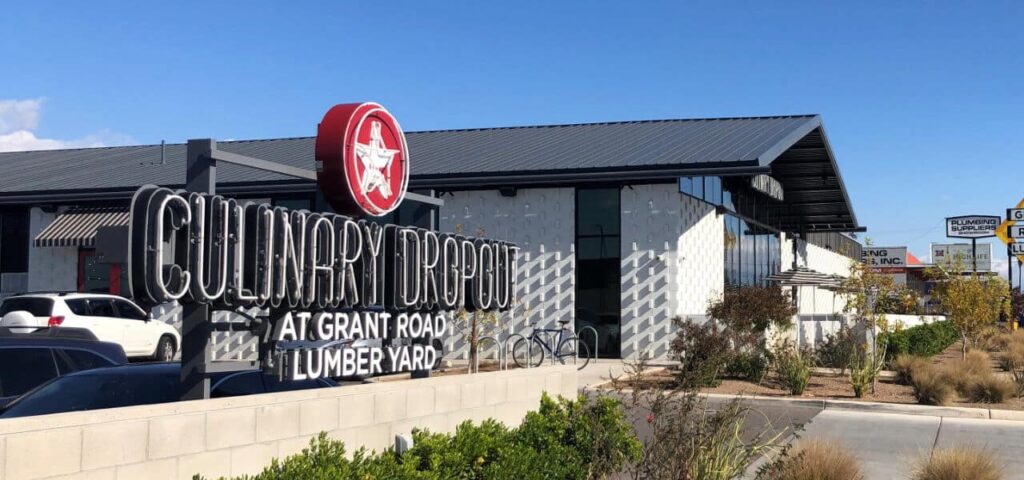
Culinary Dropout at Grant Road – https://lslawaz.com/our-projects/urban-infill/
Infill real estate development is a growing trend in urban areas, as developers seek to maximize the use of available land in densely populated cities. The creation of mixed-use developments that combine residential, commercial, and sometimes even industrial spaces in a single project not only makes efficient use of land but also creates vibrant, walkable communities that offer residents and businesses a range of amenities within close proximity.
Case studies of successful mixed-use infill developments can provide valuable insights for developers, urban planners, and other stakeholders interested in pursuing similar projects.
One such case study is the Culinary Dropout at Grant Road Lumber Yard, a successful mixed-use infill development in Tucson, Arizona. The project transformed an abandoned lumber yard into a vibrant mixed-use destination that includes a popular restaurant, retail spaces, and a public plaza. By embracing the site’s industrial heritage, the development preserved the unique character of the area while introducing new energy and activity. The project has helped revitalize the surrounding neighborhood and serves as a model for how adaptive reuse can breathe new life into underutilized urban spaces.
Another notable example of successful mixed-use infill development is The Hub at Tucson, a mixed-use student housing development located near the University of Arizona campus. Developed by Core Spaces, the project has helped meet the growing demand for high-quality, centrally located housing options for students. By integrating residential, retail, and community spaces, the Hub has created a vibrant, walkable environment that caters to the needs of the student population. The project’s strategic location and thoughtful design have made it a successful example of how mixed-use infill development can enhance the urban fabric and support a thriving university community.
Key success takeaways from these examples are the importance of adaptive reuse, placemaking, and strategic location in creating mixed-use infill developments that revitalize urban neighborhoods. By preserving the unique character of a site and introducing new amenities and activities, these projects have been able to breathe new life into underutilized areas and foster a sense of community. These case studies demonstrate the potential for mixed-use infill developments to transform urban areas and create vibrant, sustainable communities.
Chapter 3: Strategies for Infill Residential Development
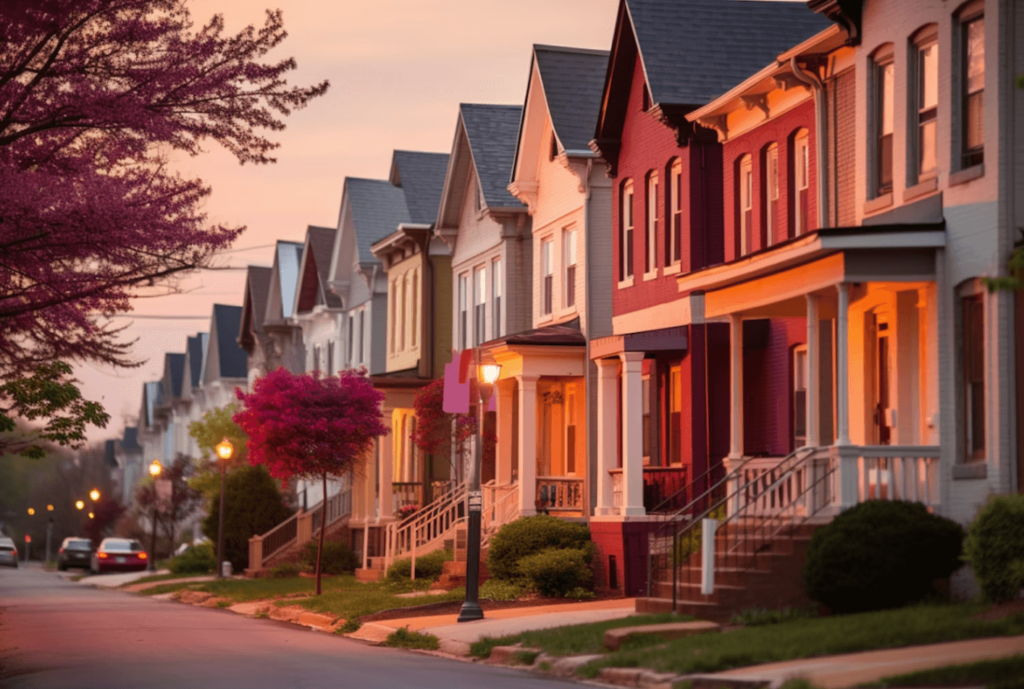
Identifying Opportunities for Infill Residential Projects
Infill real estate development offers a unique opportunity to revitalize urban areas and create vibrant, sustainable communities. One of the key components of successful infill development is identifying opportunities for infill residential projects. This involves identifying underutilized or vacant parcels of land within existing urban areas that have the potential for residential development.
As both an urban planner and developer, I recognize the pivotal role in identifying these opportunities. By conducting meticulous site analyses and evaluating the feasibility of infill residential projects, urban planners can ascertain the viability of development initiatives. Factors like zoning regulations, infrastructure availability, public transportation accessibility, and housing market demand are carefully considered to pinpoint sites suitable for infill residential development. This proactive approach not only facilitates successful development projects but also contributes to the enhancement of community livability, a cornerstone of sustainable urban growth.
Architects and engineers also play a key role in identifying opportunities for infill residential projects. They work closely with planners to assess the physical characteristics of potential development sites and determine the most appropriate design and construction strategies. This, however, does not minimize the need for the developer and/or project owner to work alongside design professionals, value-engineer the projects, and directly oversee and manage the design process. By collaborating with planners, the developer and/or owner, and other professionals, architects, and engineers can help ensure that infill residential projects are not only aesthetically pleasing but also sustainable and cost-effective. Securing the expertise of skilled architects, engineers, and professionals is essential for the success of any infill residential development project.
Homeowners, government officials, and municipal officials are also important stakeholders in the process of identifying opportunities for infill residential projects. Homeowners can provide valuable input on the types of housing they would like to see in their neighborhoods, while government and municipal officials can help facilitate the necessary approvals and permits for development projects. By working together, these stakeholders can help ensure that infill residential projects meet the needs and preferences of the community while also complying with local regulations and guidelines.
Lenders, investors, bankers, and real estate brokers or sales professionals are vital in identifying opportunities for infill residential projects. They offer crucial financing, expertise, and market insight necessary for successful development. By leveraging their resources, they can collaborate in the transformation of underutilized land parcels within their areas, into vibrant residential communities, enhancing the vitality and sustainability of urban communities. Engaging them in the process early on can strengthen the project and contribute to its success.
Design Considerations for Infill Housing

Design considerations for infill housing are crucial in creating successful and sustainable urban developments. When planning infill projects, urban planners, developers, and other collaborators must carefully consider various factors to ensure the project’s success. One key consideration is the scale and density of the development. Infill housing should be designed to fit seamlessly into the existing urban fabric, taking into account the surrounding buildings and infrastructure.
Another important consideration is the architectural style and design of the infill housing development. It is essential to create a design that complements the existing neighborhood
while also bringing a fresh and modern aesthetic. Additionally, the design should prioritize sustainability and energy efficiency, incorporating green building practices and materials to reduce the project’s environmental impact. Furthermore, accessibility and connectivity are critical considerations for infill housing projects. The development should be easily accessible by public transportation and well-connected to the surrounding community. This transit-oriented prioritization can help reduce reliance on private vehicles and promote a more walkable and bike-friendly neighborhood.
Infill housing projects should also prioritize community engagement and input. It is essential to involve local residents, businesses, and other stakeholders in the planning and design process to ensure that the project meets their needs and reflects their values. This can help build support for the development and create a sense of ownership and pride among the community.
Designing successful infill housing development projects requires careful consideration of scale, density, architectural style, sustainability, accessibility, connectivity, and community engagement. By incorporating these considerations into the planning and design process, urban planners, developers, and other stakeholders can create successful and vibrant infill developments that enhance the urban environment and benefit the community as a whole.
Financing Options for Residential Infill Development

Financing options for residential infill developments can vary depending on the specific project and the goals of the developer. There are several key options to consider when seeking funding for an infill project, including private financing, traditional bank loans, government grants and incentives, private investors, and crowdfunding.
One common financing option for residential infill development is a traditional bank loan. Banks are often willing to lend money for infill projects, especially if the developer has a strong track record of successful projects and a solid development plan and financial pro forma. However, bank loans can be difficult to secure for infill projects, as they may be considered higher risk due to the complexity of urban markets and potential challenges associated with existing infrastructure. Many developers often opt for private financing instead of bank loans, as they may be easier and faster to secure, although the interest rates and fees may not be as competitive.
Government grants and incentives are another important source of funding for residential infill development projects. Many cities and municipalities offer grants, tax credits, and other incentives to encourage infill development and revitalize urban areas. These funds can help offset the costs of infrastructure improvements, environmental remediation, and other expenses associated with infill projects. An important consideration regarding grants and incentives is that they often come with specific requirements that must be met. These can include criteria related to income diversity, affordable housing provisions, and particular contracting obligations.
Private investors are also a key source of funding for residential infill development. These investors may include individuals, real estate companies, or investment funds looking to capitalize on the potential returns of infill projects. Private investors can provide equity financing, mezzanine financing, or other forms of capital to fund infill projects.
Crowdfunding is a relatively new financing option for residential infill development that has gained popularity in recent years. Crowdfunding platforms allow developers to raise funds from a large number of individual investors, often through online campaigns. This can be a great way to access capital for infill projects, especially for smaller developers or projects that may not qualify for traditional bank loans.
While there’s a wide variety of financing and funding options available for residential infill development in addition to those mentioned, developers should carefully consider their financing needs and goals when choosing the best option for their projects. They must navigate the network of available options and collaborate with seasoned professionals to tailor sophisticated financing propositions, ensuring the effective acquisition of funding options that align best with their infill projects and significantly contribute to the revitalization of urban areas.
Chapter 4: Urban Infill Development Best Practices

Zoning Regulations and Infill Development
Zoning regulations play a crucial role in the development of infill projects in urban areas. These regulations dictate what type of development can occur on a specific piece of land, including the height, density, and use of buildings. Infill development often faces challenges due to outdated zoning codes that do not allow for the flexibility needed to create vibrant, mixed-use environments. Developers must often work together with urban planners, architects, and engineers to advocate for zoning changes that promote infill development and encourage sustainable growth, when necessary. Infill development is essential for creating vibrant, walkable communities that utilize existing infrastructure and reduce urban sprawl. However, outdated zoning regulations can hinder the progress of infill projects by restricting the types of development that can occur in certain areas. By working with stakeholders, government officials, urban planners, and municipal leaders, developers can advocate for changes to zoning codes that promote mixed-use infill development and encourage a variety of housing options for residents. Government officials have significant influence in shaping zoning regulations to bolster infill development within urban areas. Through close collaboration with urban planners and developers, these officials can formulate zoning codes that foster sustainable development practices and facilitate the rejuvenation of underutilized land.
Real estate developers must actively engage key lenders, investors, and financiers to ensure the success of infill projects. These essential stakeholders provide the crucial funding necessary to bring these developments to fruition. Additionally, real estate brokers and agents play a pivotal role in facilitating connections between developers and potential infill opportunities within urban areas.
Understanding the unique challenges and opportunities of infill development empowers brokers and real estate agents to collaborate with developers in navigating complex zoning regulations and identifying suitable properties for their projects. Additionally, other professionals and businesses in the real estate industry can contribute by advocating for zoning changes that support infill development and promote sustainable growth in urban areas.
As an urban planner and real estate developer, I prioritize designing and developing “by right” whenever possible, avoiding the need for zoning changes, conditional use approvals, or special use permits. However, this option isn’t always available. Hence, developers must collaborate with stakeholders and advocate for zoning changes that promote infill development and foster the establishment of diverse, walkable communities in urban areas. It often proves beneficial for real estate developers within the same community to unite in pursuing these mutually advantageous changes and support each other, thereby creating a more robust business environment.
Community Engagement in Infill Projects

Community engagement is a crucial aspect of successful infill projects in urban areas. Engaging with the local community helps developers better understand the needs and concerns of residents, leading to more thoughtful and inclusive development plans. Infill projects have the potential to transform neighborhoods and improve the quality of life for residents, but without community input, these projects can face opposition and resistance.
One way to engage the community in infill projects is to hold public meetings and workshops where residents can provide feedback and share their ideas. This not only helps developers gain valuable insights into the needs and preferences of the community but also fosters a
sense of ownership and pride among residents. By involving the community in the planning process, developers can create projects that are more responsive to the unique character and culture of the neighborhood. In addition to public meetings, developers can also use social media and online platforms to engage with the community. This allows for broader outreach and enables residents to participate in the planning process from the comfort of their own homes. Developers can expand their reach to a broader audience and guarantee inclusivity in the decision-making process through the strategic utilization of technology.
Another important aspect of community engagement in infill projects is transparency. Developers should be open and honest about their plans and be willing to address any concerns or objections raised by residents. Through transparency and responsiveness, developers foster trust within the community, nurturing a collaborative and positive relationship.
Community engagement stands as a pivotal factor in the success of infill projects within urban areas. Involving residents in the planning process enables developers to craft projects that are not only more sustainable and inclusive but also more responsive to community needs. Prioritizing community engagement in infill projects increases the likelihood of residents embracing them, thus contributing significantly to the well-being and vitality of neighborhoods.
Sustainable Practices in Urban Infill Development

Sustainable practices in urban infill development are essential for creating vibrant, resilient, and environmentally friendly communities. As urban areas continue to grow and expand, it is crucial to prioritize sustainable practices to ensure that new development is both economically viable and socially responsible. Incorporating sustainable design principles into infill projects allows developers to fashion spaces that excel not only in aesthetics but also in energy efficiency, water conservation, and environmental friendliness.
A key sustainable practice in urban infill development is the use of green building materials and techniques and technologies. Incorporating materials such as recycled wood, bamboo flooring, and energy-efficient windows aids developers in lessening the environmental footprint of their projects, simultaneously fostering healthier living environments for residents. Additionally, green building techniques such as passive solar design, green roofs, and rainwater harvesting can help to reduce energy consumption and minimize the project’s carbon footprint.
Discover how advanced construction methods play a pivotal role in revitalizing communities in my latest blog post titled “Building a Brighter Future”. This practice is integral to all my real estate development endeavors at Metrovitalization.
Another important sustainable practice in urban infill development is the preservation of existing green spaces and natural habitats. By prioritizing the protection of trees, wetlands, and other natural features, developers can create more sustainable and livable communities. Infill projects that incorporate green spaces such as parks, community gardens, and greenways not only provide residents with access to nature but also help to mitigate the urban heat island effect and improve air quality.
Water conservation represents a critical facet of sustainable urban infill development. Implementing water-saving technologies like low-flow fixtures, rainwater harvesting systems, and permeable paving facilitates a reduction in water usage and mitigates stormwater runoff. Furthermore, integrating green infrastructure such as bioswales, rain gardens, and constructed wetlands aids in the effective management of stormwater and enhances water quality in urban areas.
Sustainability in infill development projects gains momentum through the creation of temporary jobs during construction and the establishment of permanent jobs post-construction. This economic injection not only supports the sustainability of the constructed buildings and homes but also enhances the long-term viability of the businesses and families that will inhabit them.
Through the creation of employment opportunities across various stages of the development process, from planning, to design, to construction and ongoing operations, developers nurture economic resilience within the community. The multifaceted benefits of job creation in infill development play a crucial role in advancing sustainable urban growth and fostering thriving, resilient, and environmentally friendly communities. The strategic integration of these sustainable principles into infill development projects enables developers to create spaces that are not only aesthetically pleasing but also energy-efficient, water-efficient, environmentally friendly, and economically beneficial for businesses and residents, forging truly sustainable environments.
Chapter 5: Infill Commercial Development Retail and Office Spaces in Urban Infill Projects
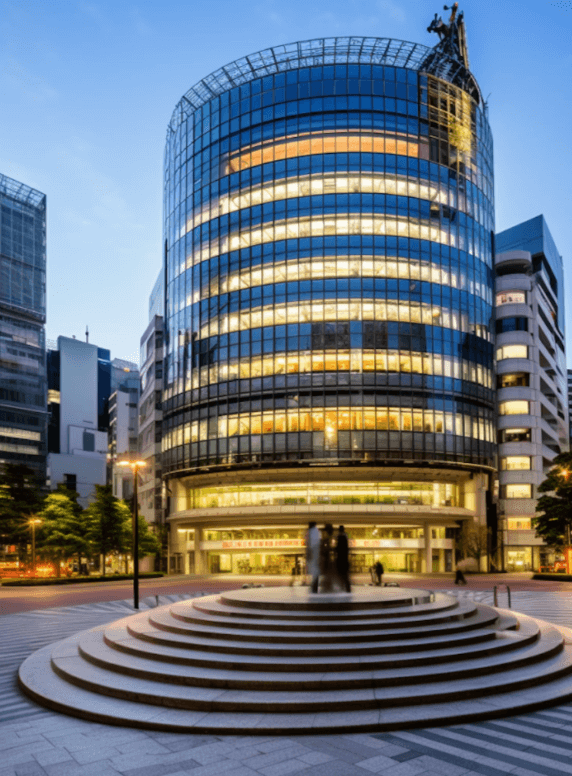
In urban infill projects, the development of profitable retail and office spaces can become key elements for the creation of vibrant and sustainable communities. These spaces not only provide essential services to residents but also contribute to the overall economic vitality of the neighborhood. Retail spaces in particular help create a sense of place and identity, attracting both residents and visitors to the area. Office spaces, on the other hand, provide opportunities for businesses to thrive and contribute to job creation and economic growth.
When designing retail and office spaces in urban infill projects, it is important to consider the needs and preferences of the local community. Retail spaces should be designed to accommodate a mix of businesses, including small local shops, restaurants, and services that cater to the diverse needs of residents. Office spaces, on the other hand, should be designed to attract a range of businesses, from startups to established companies, and provide a mix of flexible workspaces to accommodate different needs.
Infill real estate developers should also consider the sustainability of retail and office spaces in urban infill projects. This includes incorporating green building practices, such as energy-efficient design, sustainable materials, and access to public transportation. By creating environmentally friendly spaces, developers can attract environmentally conscious businesses and consumers, while also reducing the carbon footprint of the development.
In addition to sustainability, it is beneficial for developers to also focus on creating inclusive and accessible retail and office spaces in urban infill projects. This includes providing amenities such as bike racks, public seating, pocket parks, “green open spaces”, and pedestrian-friendly walkways to encourage foot traffic and create a welcoming environment for all residents. Designing spaces that invite cultural events and activities in open areas helps enhance the local culture and incites vibrancy to create a pleasant and attractive atmosphere that helps revitalize the spirit of previously blighted or neglected areas. By designing spaces that are accessible to everyone, developers can create a more inclusive and diverse community that benefits all stakeholders.
Get inspired by the real-life transformation of an urban area once plagued with blight, homelessness, deterioration, and abandonment that is now a thriving urban oasis for residents, businesses, and tourists—the Miami Design District. See how the Dacra real estate development firm strategically catalyzed the revitalization of the community into a thriving hub of creativity and commerce. This brief article by Florida International University’s Business School, “Dacra’s vision and patience turned Miami’s Design District into a luxury juggernaut“, describes how the developer crafted and effectuated a revitalization plan that transformed the area by working with local government and simultaneously convincing numerous retail brands to open flagship stores there. Dacra also helped bring Art Basel, the international art fair, to Miami to further curate their vision for the Design District.
I personally witnessed part of the infill development toward the tail-end and later years of the transformation in Miami. Today, the Design District is a 20-block area with over 1 million square feet of residential and commercial space, including high-end luxury retail, art galleries, event spaces, and restaurants, and it stands as a true testament to neglected urban areas in need of revitalization, and how strategic developers can collaborate with the community, government, and the private sector to bring new life and economic vitality to areas. This revitalization effort, orchestrated by a private developer, strategically transformed a blighted area economically by applying the principles of infill investment, urban planning, and development outlined in this e-book.
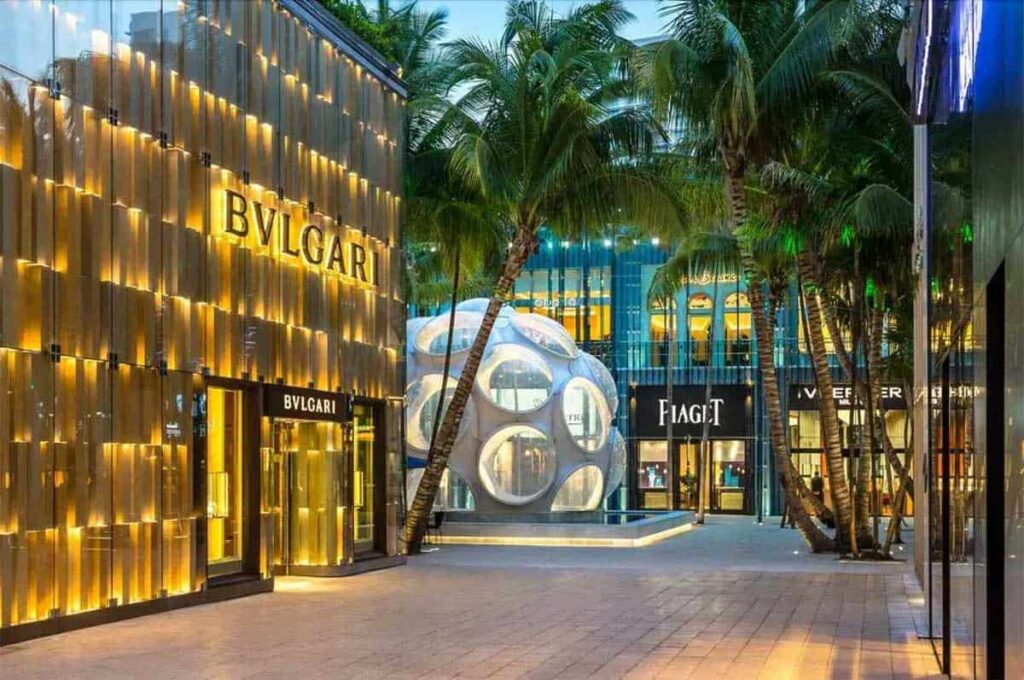
In summary, retail and office spaces within urban infill projects serve as pivotal components in fostering vibrant and sustainable communities. By prioritizing the needs and preferences of the local community, integrating sustainable practices, and cultivating inclusive and accessible environments, developers can contribute to the establishment of flourishing neighborhoods that yield benefits for residents, businesses, and the environment alike.
Challenges and Solutions in Commercial Infill Development
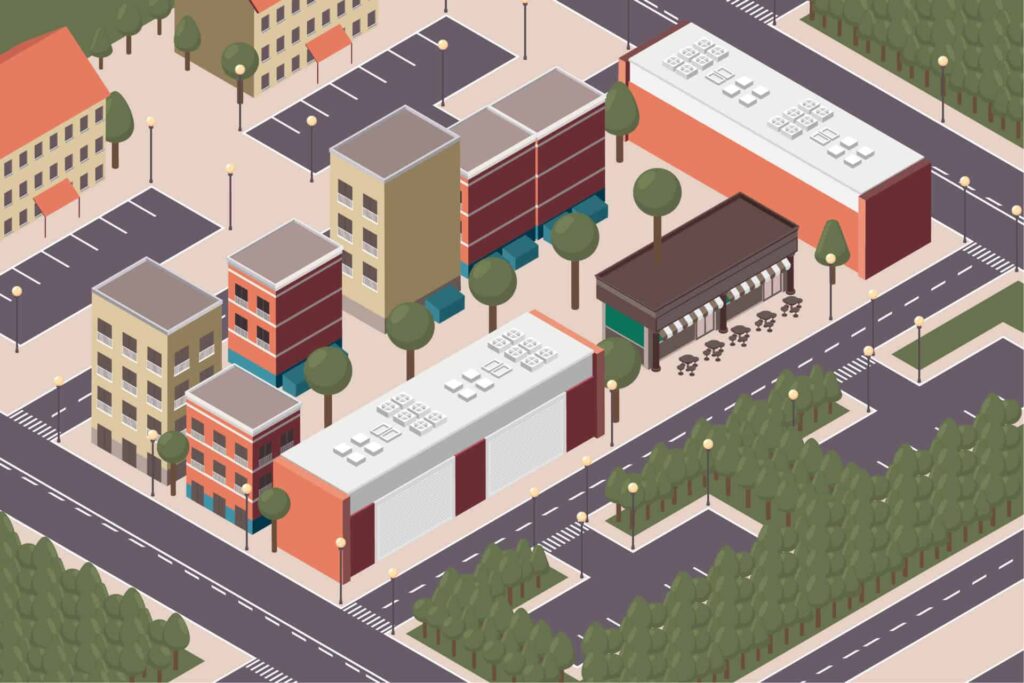
Commercial infill development can pose unique challenges that require innovative solutions to ensure successful outcomes. One of the main challenges in commercial infill development is often the limited availability of suitable land in urban areas. Finding a suitable site that meets the needs of the project while also complying with zoning regulations and other restrictions can be difficult. This often requires creative thinking and collaboration between developers, urban planners, local real estate brokers/professionals, and government officials to identify and acquire suitable sites for development. Another challenge in commercial infill development is the need to balance the interests of various stakeholders, including homeowners, businesses, and government agencies.
Commercial infill projects often involve redeveloping existing properties, which can impact the surrounding community in terms of traffic, noise, and aesthetics. It is important for developers to engage with stakeholders early in the planning process to address concerns and find mutually beneficial solutions.
One of the key solutions to overcoming challenges in commercial infill development is to adopt a mixed-use approach. By incorporating a mix of residential, commercial, and recreational spaces in a single development, developers can create vibrant, walkable communities that appeal to a wide range of residents and visitors. Mixed-use infill projects can also help to maximize land use efficiency and promote sustainable development practices.
Another solution is what I call the “Secret Sauce for Sustainable Development”: City and developer strategic alliances, such as public/private collaboration efforts and agreements. Get a depth of insight into this approach from my blog article: “City and Developer Strategic Alliances: The Secret Sauce for Sustainable Development”, where I share known strategies and specific case studies for this transformative development strategy.
Commercial infill real estate development can also benefit from the use of innovative design and construction techniques. By utilizing green building practices, such as energy-efficient materials and sustainable design principles, developers can reduce the environmental impact of their projects and create healthier, more resilient communities. Sustainable infill development can also help to attract environmentally conscious tenants, businesses, developers, and investors, leading to long-term financial and social benefits.
A successful commercial infill development requires a collaborative and forward-thinking approach that takes into account the needs of various stakeholders and the unique challenges of urban environments. Embracing mixed-use development, employing public/private collaboration approaches where applicable, actively engaging with stakeholders, and integrating sustainable design practices are key strategies for developers to foster vibrant, thriving communities. Through these methods, developers can cultivate environments that yield benefits for residents, businesses, the economy, and the environment alike.
Market Strategies for Infill Commercial Properties
Effective marketing strategies are essential for the success of infill commercial properties in urban markets. A collaborative effort involving urban planners, architects, engineers, homeowners, government officials, municipal authorities, lenders, investors, bankers, real estate brokers, companies, and various professionals is crucial in the development and promotion of these properties. Within this subchapter, we will delve into several impactful marketing strategies aimed at maximizing the value of infill commercial developments.
One key marketing strategy for infill commercial properties is to leverage the unique characteristics of the surrounding neighborhood. By highlighting the proximity to amenities, public transportation options, and cultural attractions, developers can appeal to potential tenants and customers who value convenience and accessibility. This can help differentiate the property from competitors and attract a diverse range of businesses and customers.
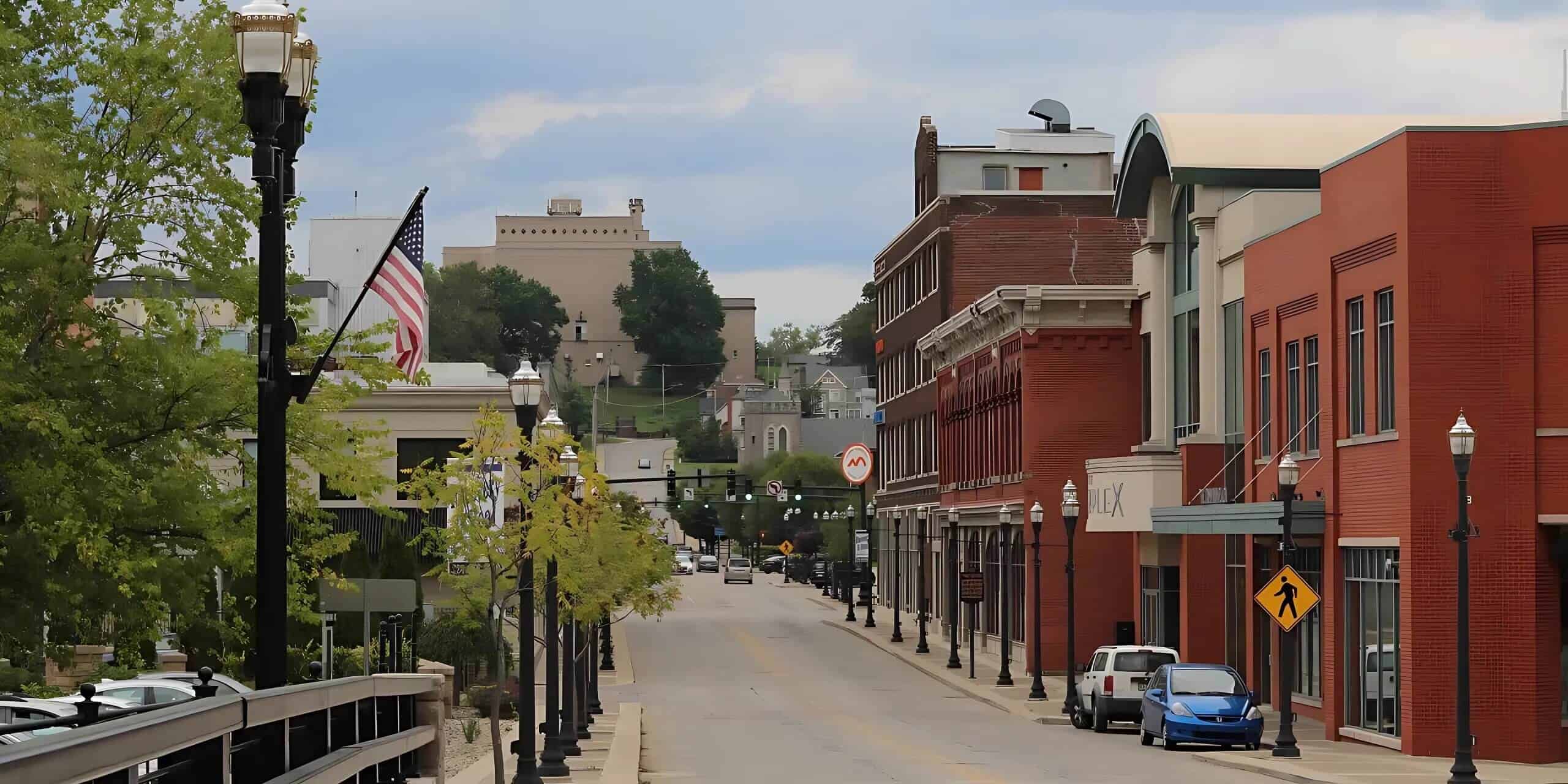
Expanding on this, consider the downtown district of New Castle, PA, which is currently undergoing a transformative revitalization and sustainability initiative. The city has unique qualities including a beautiful creek and a river that traverse the downtown urban landscape. This is a unique opportunity for strategic branding and marketing efforts for the initiative. Leveraging these distinctive features will not only showcase the beauty and character of the city but also serve as a catalyst for attracting new business and commercial infill developments to the downtown district. By highlighting these natural assets,
developers can create a compelling narrative that resonates with potential tenants and customers, further enhancing the appeal and success of the infill commercial properties in the area.
I showcased how a city with comparable features leveraged its strengths in a revitalization endeavor, transforming into one of the nation’s most beautiful and desirable places to reside: Greenville, SC. Explore the highlights of Greenville’s rejuvenation in my previous article titled: Epic Revitalization.
Another important marketing strategy for infill commercial properties is to create a strong online presence. In today’s digital age, potential tenants and customers often start their search for commercial space online. By investing in professional photography, virtual tours, and search engine optimization, developers can increase visibility and attract interest from a wider audience. Social media platforms can also be used to engage with the community and showcase the unique features of the property.
Collaborating with local businesses and community organizations can also be an effective marketing strategy for infill commercial properties. By hosting events, sponsoring local initiatives, and partnering with neighboring businesses, developers along with their investors and partners can create a sense of community and foster a positive reputation for the property. This can help attract tenants who value a vibrant and connected neighborhood, as well as customers who appreciate supporting local businesses.
Infill commercial properties can also benefit from targeted marketing campaigns that highlight the sustainability and green features of the development. By promoting energy-efficient design, green building certifications, and eco-friendly amenities, developers can appeal to environmentally conscious tenants and customers. This can also help differentiate the property in a competitive market and attract businesses that prioritize sustainability in their operations.
The importance of strategic marketing and branding strategies for infill commercial properties cannot be overstated, as they play a crucial role in establishing significant value and success in urban development projects. By leveraging the unique characteristics of the neighborhood, creating a strong online presence, collaborating with local businesses, and highlighting sustainability features, developers can attract a diverse range of tenants and customers. The tactical and effective implementation of these strategies in infill commercial development projects can bolster urban markets and contribute to the vibrancy and sustainability of the community.
Chapter 6: Sustainable Infill Development
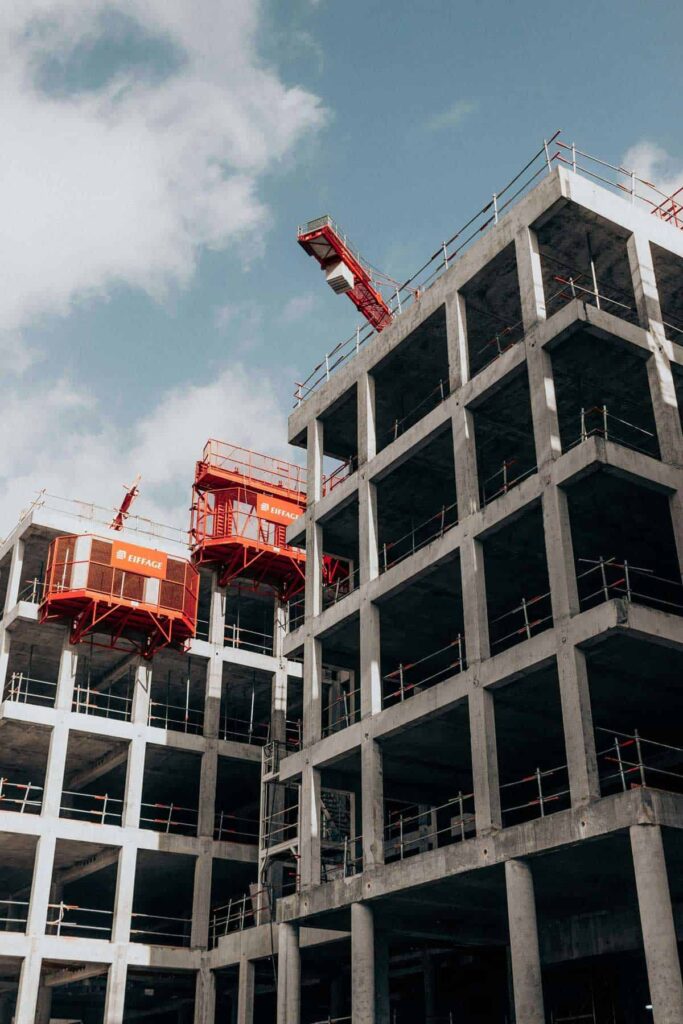
Green Building Practices in Infill Projects
Green building practices in infill projects are essential for creating sustainable and environmentally-friendly urban spaces. Infill development, which involves building on vacant or underutilized land within existing urban areas, provides a unique opportunity to incorporate green building techniques that promote energy efficiency, reduce waste, and minimize environmental impact.
One key aspect of green building practices in infill projects is the use of sustainable materials. This includes using locally sourced materials to reduce transportation emissions, as well as choosing materials that are renewable, recyclable, or made from recycled content. By selecting sustainable materials, developers along with their investors and partners can reduce the carbon footprint of their projects and contribute to a healthier built environment. Incorporating modern modular construction into all Metrovitalization projects, whether residential or commercial, has become the signature of our green building practices. While the modular approach may not suit every construction type, we have successfully modularized approximately 98% of our projects, ensuring higher efficiency ratings and adherence to “green building” standards. For structures where modular construction isn’t feasible (such as buildings that require very broad spans between columns), we adhere to modular standards in our “stick-built”
constructions, maintaining the same efficiencies across the board. Today’s modular construction method significantly enhances efficiency and reduces the environmental impact of our projects, both residential and commercial. Modular construction offers a cost-effective solution while also improving construction quality and speed. For deeper insights into why we prioritize modular construction for sustainability over other methods, I invite you to explore my blog article: “Modular Versus Prefab and Conventional Homes: Which Is Superior? Although primarily focused on residential developments, the principles discussed in this article are equally applicable to commercial development and construction.
In addition to using sustainable materials, green building practices in infill projects also involve incorporating energy-efficient design features. This may include installing high-efficiency HVAC systems, energy-efficient lighting, and insulation to reduce energy consumption and lower utility costs for residents and businesses. By designing buildings with energy efficiency in mind, developers can create spaces that are not only environmentally-friendly, but also more affordable and comfortable for occupants.
Another important aspect of green building practices in infill projects is water conservation. This can be achieved through the use of low-flow fixtures, rainwater harvesting systems, and permeable paving materials that allow rainwater to infiltrate the ground instead of running off into storm drains. As an example, our Royalty Camping development will include a rain collection system that will be used to feed the lazy river and the campground water supply. This system is anticipated to reduce water consumption by over 82%. Implementing water conservation measures enables developers to decrease water usage, mitigate waterway pollution, and enhance the overall sustainability of their projects.
Green building practices in infill projects are essential for creating sustainable, resilient, and vibrant urban spaces. Incorporating sustainable materials, energy-efficient design features, and water conservation measures allows developers to create buildings that are not only environmentally-friendly but also economically viable and socially beneficial.
LEED Certification and Infill Development
In the world of infill real estate development, sustainability is key. One way to ensure that new infill projects are environmentally friendly is to obtain LEED certification. LEED, or Leadership in Energy and Environmental Design, is a globally recognized green building certification program that promotes sustainable building and development practices. By obtaining LEED certification for an infill project, developers can showcase their commitment to sustainability and attract eco-conscious buyers and tenants. One of the main benefits of obtaining LEED certification for an infill development is the positive impact it can have on the environment. LEED-certified buildings are designed to be energy-efficient, water-efficient, and environmentally friendly. They use sustainable materials, reduce waste during construction, and promote healthy indoor air quality. By incorporating these green building practices into infill projects, developers can help reduce the carbon footprint of urban areas and create a more sustainable built environment.
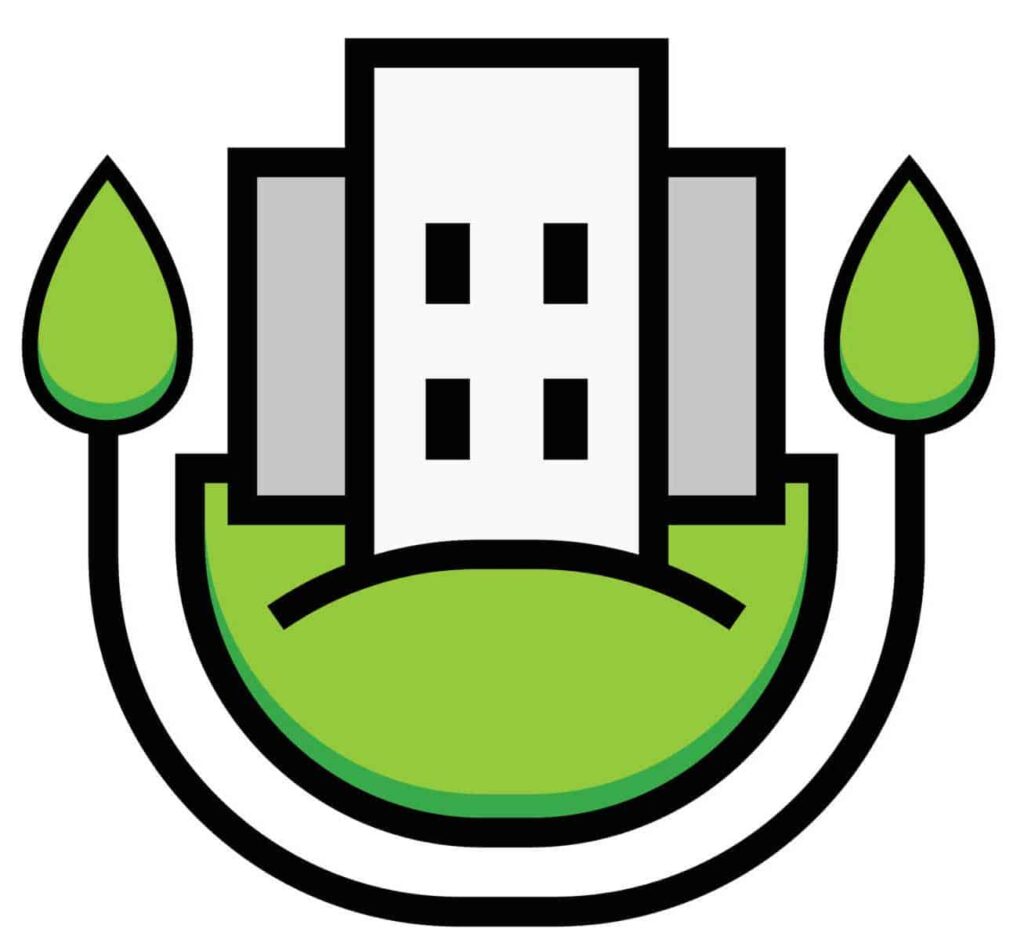
LEED certification can also have financial benefits for infill developers. Studies have shown that LEED-certified buildings have higher property values, lower operating costs, and higher occupancy rates than non-certified buildings. Infill projects that are LEED-certified may be eligible for government incentives, tax breaks, and grants, which can help offset the upfront costs of sustainable building practices. Additionally, LEED-certified buildings are more attractive to investors, lenders, and tenants who are looking for environmentally responsible properties.
According to IR Partners, LEED-certified buildings were shown to have[2]:
– 31% higher sales values
– 23% higher occupancy rates
– 8% higher rental income
Additionally, according to CBRE, “operating expenses for buildings with Energy Star certifications in the US were 30% lower compared to those without it.
These sources provide strong evidence that LEED certification is associated with higher property values, lower operating costs, and higher occupancy rates for commercial real estate.
For developers involved in infill development and revitalization, obtaining LEED certification can be a way to differentiate their projects in a competitive market. LEED-certified buildings are seen as a mark of quality and innovation in the real estate industry, and having this certification can help attract clients and showcase expertise in sustainable design and construction. This can be a key benefit for the marketing and branding efforts discussed previously.
LEED certification and infill development go hand in hand when it comes to creating sustainable and environmentally friendly urban spaces. By obtaining LEED certification for infill projects, developers can showcase their commitment to sustainability, attract eco-conscious buyers and tenants, and benefit from financial incentives and higher property values. Incorporating LEED principles into infill development is not only beneficial for the environment in creating healthier and more efficient buildings and contributing to the overall sustainability of urban areas.
Chapter 7: Financing and Investment Opportunities in Infill Real Estate

Lenders and Investors in Infill Projects
It’s essential to recognize the key role that lenders and investors play in the success of infill projects. These individuals and institutions provide the capital needed to bring new projects to life in urban areas. Without the forging of strong relationships between developers, lenders and investors, many infill projects would never come to fruition. Therefore, it is important for developers to understand how to engage and collaborate effectively with these key stakeholders to guarantee the success of their projects.
When seeking funding for an infill project, developers should be prepared to provide lenders and investors with a comprehensive real estate development plan, financial pro forma, summarized deal sheets or financing propositions, and related documents that outline the potential risks and rewards of the project. The documentation must be professional and include detailed financial projections, market analysis, and a clear timeline for completion. By demonstrating a thorough understanding of the project and its potential for success, developers can increase the availability of funding sources for their projects
In addition to providing a solid development plan and the related documents, developers must also be prepared to answer any questions or concerns that lenders and investors may have about the project. This may involve addressing issues such as zoning regulations, environmental impact, or potential market fluctuations. Being transparent and responsive to the concerns of lenders and investors is essential for developers to secure funds for their projects and ensure successful completion.
Furthermore, developers should consider working with lenders and investors who have experience with infill projects and align well with the developer’s missions, goals, objectives, and vision, as they are more likely to understand the unique challenges and opportunities and can provide valuable insights and guidance throughout the project. This approach increases the developer’s ability to secure the required capital and minimize potential risks. Matching developers with the right lenders and investors is a key strategy for effective infill development to revitalize urban areas and breathe new life into them. These key relationships are crucial cornerstones for the positive transformation of communities.
Real Estate Market Trends and Infill Opportunities
Understanding real estate market trends is crucial in shaping the success of infill development projects within urban areas. It’s imperative for all stakeholders to grasp these trends. Although unforeseen issues can arise suddenly, such as the economic downturn and global financial crisis that resulted from the COVID-19 pandemic in 2020, by keeping abreast of current market conditions and recent trends, stakeholders can maximize risk mitigation and pinpoint infill opportunities that resonate with the latest demand patterns and consumer preferences. Urban infill development is largely driven today by the demand for sustainable and environmentally friendly projects. Overall, staying informed about real estate market trends and infill opportunities is essential for success in urban development projects.

By understanding the demand for mixed-use, residential, sustainable, and commercial infill projects, stakeholders can identify profitable opportunities and contribute to the growth and revitalization of urban communities.
Risk Management in Infill Development
Risk management is a crucial aspect of any real estate development project, especially when it comes to infill development in urban areas. Infill projects often come with unique challenges and potential risks that must be carefully considered and mitigated in order to ensure a successful outcome. This subchapter will explore some of the key risk management strategies that can be employed in infill development projects, including identifying potential risks, developing mitigation plans, and implementing risk management tools and techniques.
One of the first steps in effective risk management in infill development is to conduct a thorough risk assessment. This involves identifying potential risks and vulnerabilities associated with the project, such as environmental hazards, regulatory requirements, market conditions, and financial uncertainties. By understanding these risks upfront, developers can better prepare for them and develop strategies to mitigate their impact on the project.
Developing a comprehensive risk management plan is another key component of successful infill development projects. This plan should outline the specific risks identified during

the assessment process, as well as the strategies and tools that will be used to manage and mitigate those risks. This may include contingency plans, insurance coverage, contractual agreements, and other risk management techniques that can help protect the project from unexpected challenges.
Implementing risk management tools and techniques is essential for ensuring the success of an infill development project. This may involve regular monitoring and evaluation of risks throughout the project lifecycle, as well as making adjustments to the risk management plan as needed. By staying proactive and responsive to potential risks, developers can minimize their impact on the project and increase the likelihood of a successful outcome.
Infill development projects can be complex and challenging, but with effective risk management strategies in place, developers can navigate these challenges with confidence. By conducting a thorough risk assessment, developing a comprehensive risk management plan, and implementing risk management tools and techniques, developers can protect their investments and ensure the long-term success of their infill projects. By prioritizing risk management in infill development, developers can minimize uncertainties and maximize opportunities for success in urban markets.
Chapter 8: Regulations and Policies for Successful Infill Development

Government Incentives for Infill Projects
Infill projects play a crucial role in the revitalization of urban areas, helping to create vibrant, sustainable communities. However, these projects can often face challenges such as high costs, regulatory hurdles, and community resistance. To incentivize developers and investors to undertake infill projects, many governments offer a range of incentives and support programs. One of the most common incentives for infill projects is tax abatements or credits.
These incentives can help offset the high costs associated with developing in urban areas, making infill projects more financially feasible for developers. In addition, governments may offer grants or low-interest loans to help cover the costs of infrastructure improvements or environmental remediation that may be necessary for infill projects.
Another important incentive for infill projects is streamlined permitting processes. Infill projects often face lengthy and complex permitting processes, which can delay construction and increase costs. Governments can help expedite the permitting process for infill projects, making it easier for developers to get their projects off the ground.
In addition to financial incentives and streamlined permitting processes, governments may also offer technical assistance and support for infill projects. This can include assistance with site selection, planning and design, environmental assessments, and community engagement. By providing this support, governments can help ensure that infill projects are successful and benefit both developers and the community.
Overall, government incentives for infill projects play a crucial role in promoting sustainable, mixed-use development in urban areas. By offering financial incentives, streamlined permitting processes, and technical support, governments can help incentivize developers to undertake infill projects and create vibrant, livable communities. Understanding and taking advantage of these incentives can help ensure the success of infill projects and the revitalization of urban areas.
Regulatory Hurdles in Infill Development

Regulatory hurdles in infill development can pose significant challenges for developers looking to revitalize urban areas. From zoning restrictions to environmental regulations, navigating the complex web of rules and regulations can be daunting for even the most experienced real estate professionals. In this subchapter, we will explore some of the key regulatory hurdles that can impact the success of infill development projects. One of the major regulatory hurdles in infill development is zoning restrictions. Many older urban areas were developed before modern zoning regulations were put in place, leading to a patchwork of conflicting rules and regulations.
Developers may find themselves facing restrictions on building height, setbacks, and land use that can hinder their ability to create the type of mixed-use developments that are often desired in urban areas.
Environmental regulations can also present challenges for infill developers. Brownfield sites, which are former industrial or commercial properties that may be contaminated with hazardous substances, require extensive cleanup efforts before they can be redeveloped. Navigating the regulatory requirements for environmental remediation can add time and cost to infill development projects, making them less attractive to investors.
Historic preservation regulations can also impact infill development projects in urban areas. Many older buildings in urban areas are protected by historic preservation laws, which can restrict the ability of developers to demolish or alter these structures. Balancing the need for preservation with the desire for new development can be a delicate process that requires careful negotiation with local historic preservation boards.
In addition to these specific regulatory hurdles, infill developers must also contend with the general complexities of working within a municipal regulatory framework. Building codes, permitting processes, and other regulations can vary widely from city to city, adding an additional layer of complexity to infill development projects. Working closely with city officials, planners, and other stakeholders is crucial for navigating these regulatory hurdles and ensuring the success of infill projects.
Despite these challenges, infill development offers unique opportunities for revitalizing urban areas and creating vibrant, sustainable communities. By understanding and addressing the regulatory hurdles that can impact infill projects, developers can unlock the full potential of these valuable real estate opportunities. With careful planning, collaboration, and perseverance, infill development can be a rewarding and profitable endeavor for all stakeholders involved.
Collaboration with Municipal Officials for Successful Infill Projects
Successful infill projects require collaboration with municipal officials in order to navigate through the complex regulations and requirements that come with developing in urban areas. Municipal officials play a crucial role in the approval process for infill projects, as they are responsible for enforcing zoning laws, building codes, and other regulations that govern development in their jurisdiction. By working closely with these officials, developers can ensure that their projects comply with all necessary guidelines and requirements, ultimately leading to a successful outcome. One key aspect of collaborating with municipal officials for successful infill projects is establishing open lines of communication from the outset. By engaging with officials early in the planning process, developers can gain valuable insights into the specific requirements and regulations that will impact their projects.

This early dialogue can help to identify potential challenges and obstacles, allowing developers to proactively address them before they become major roadblocks to the project’s progress.
In addition to communication, collaboration with municipal officials also involves building relationships based on trust and transparency. Developers who demonstrate a commitment to following regulations and working in partnership with officials are more likely to receive support and cooperation throughout the development process. By fostering positive relationships with municipal officials, developers can streamline the approval process and ensure that their projects move forward smoothly and efficiently.
Furthermore, collaboration with municipal officials can also help developers to access valuable resources and support that can enhance the success of their infill projects. Municipal officials often have access to information, data, and expertise that can be leveraged to overcome challenges and optimize the project’s design and implementation. By tapping into these resources, developers can benefit from the knowledge and experience of municipal officials, ultimately leading to a more successful and sustainable infill project.
Through effective collaboration with municipal officials, developers can ensure that their infill projects meet all necessary guidelines and regulations, ultimately leading to successful outcomes for all stakeholders involved.
Chapter 9: Case Studies of Successful Infill Projects

Urban Infill Success Stories
Urban infill development has become increasingly popular in recent years as cities look for ways to maximize land use and revitalize existing neighborhoods. The following three case studies explore some success stories in urban infill development that have transformed neglected areas into vibrant, thriving communities.
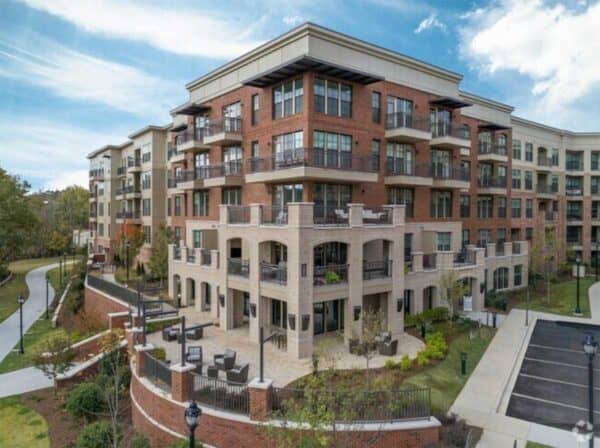
1. Project Renaissance
Project Renaissance is an exemplary infill development project that transformed abandoned warehouses in a neglected industrial zone into the vibrant Millennial Lofts. By embracing adaptive reuse, the project preserved the industrial charm while offering contemporary living spaces. The success extended beyond just the architectural innovation, as it revived the soul of the surrounding neighborhood. The GreenVille Residences within Project Renaissance further showcase sustainable urban living, with features like rooftop gardens, energy-efficient systems, and eco-friendly architecture.
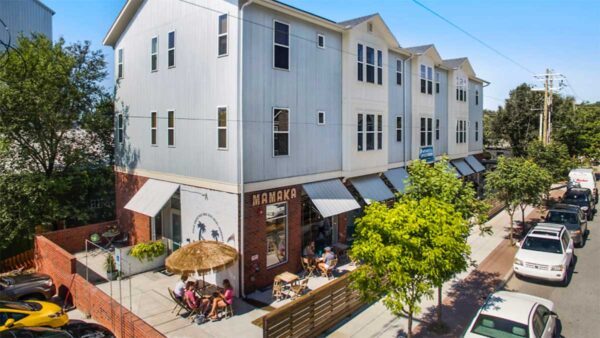
2. Fayetteville, Arkansas
Fayetteville, Arkansas eliminated parking minimums in 2015, which unlocked new development opportunities in the city’s downtown. Local developers were previously deterred by the onerous parking requirements, but the policy change allowed them to redevelop abandoned or underused properties. This led to the creation of new small businesses, like the Feed & Folly restaurant and rooftop bar, that were able to thrive without the need for extensive on-site parking. The lack of a major backlash to the policy shift demonstrated that the previous parking minimums were not well-justified.
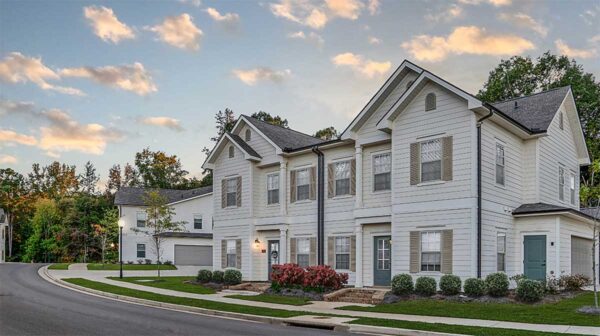
3. Oxford, Mississippi
In 2017, the City of Oxford, Mississippi leveraged a new, increased bedroom-per-acre measure and an incentive ordinance for affordable housing to spur the production of much-needed workforce housing near the city’s historic town square. This has allowed the residents who staff businesses in the downtown area to live closer to their workplaces, creating a more vibrant and walkable community. The reforms have not only increased the housing supply, but have also shaped a more exciting and welcoming community for both young families and older populations. [3]
Key success takeaways from these examples include the importance of adaptive reuse, sustainable design, and zoning reform in unlocking new development opportunities and revitalizing urban communities. By embracing these principles, cities can transform neglected spaces into thriving, community-centric hubs that balance density, sustainability, and human-centered design.
Urban infill success stories demonstrate the power of collaboration, creativity, and vision in transforming neglected areas into vibrant, sustainable communities. By bringing together various stakeholders and leveraging existing resources, developers, homeowners, government officials, and community members can work together to revitalize urban areas and create lasting positive change. As the demand for infill development continues to grow, these success stories serve as inspiration for future projects that prioritize sustainability, inclusivity, and community engagement.
Lessons Learned from Infill Development Projects
Infill development projects have become increasingly popular in urban markets as cities look to maximize land use and revitalize neighborhoods. As urban planners, architects, engineers, and other professionals involved in infill real estate development, there are several key lessons that can be learned from past projects to ensure success in future endeavors.
One important lesson learned from infill development projects is the importance of community engagement. Engaging with residents, local businesses, and other stakeholders early on in the planning process can help ensure that the project meets the needs and desires of the community. This can also help to build support for the project and mitigate potential opposition.
Another lesson learned is the importance of sustainable design and development practices. Infill projects often involve redeveloping existing properties or building on vacant lots, which can have environmental implications. By incorporating sustainable design features such as green building materials, energy-efficient systems, and green infrastructure, developers can minimize their impact on the environment and create more resilient, long-lasting projects.
Additionally, infill development projects require careful consideration of zoning and regulatory requirements. Infill projects are often subject to strict zoning codes and regulations, which can vary from one municipality to another. It is important for developers to work closely with government officials, municipal officials, and other stakeholders to navigate the regulatory landscape and ensure compliance with all applicable laws.
Infill development projects also present unique financing challenges. Lenders, investors, and bankers may be hesitant to finance infill projects due to their perceived risks. Developers must be prepared to present a solid business plan, demonstrate the project’s viability, and secure financing from a variety of sources. Real estate brokers and companies can also play a key role in connecting developers with potential investors and lenders.
Infill development projects offer a unique opportunity to revitalize urban neighborhoods, optimize land usage, and foster sustainable, dynamic communities. By leveraging insights from past successful projects and integrating best practices into future endeavors, project developers, urban planners, investors, lenders, government officials, architects, engineers, homeowners, businesses, and other stakeholders within the community can actively participate in ensuring the success of these initiatives. This collective effort contributes to the ongoing growth and revitalization of urban areas, benefiting both present and future generations.
Future Trends in Infill Real Estate

Infill real estate investing has been gaining popularity in urban markets due to the increasing demand for properties in prime city locations and designated growth areas. As urban areas continue to grow and evolve, the future trends in infill real estate investing are becoming more apparent. One of the key trends that is expected to shape the future of infill real estate investing is the focus on sustainable development. With the growing concern for environmental sustainability, developers and their investors and partners are looking for ways to incorporate green building practices and energy-efficient technologies into their infill projects.
Another trend that is expected to impact infill real estate investing in the future is the rise of mixed-use infill development. Mixed-use developments, which combine residential, commercial, and retail spaces in one project, are becoming increasingly popular in urban markets. These developments not only provide residents with convenient access to amenities but also create vibrant and walkable communities that attract both residents and businesses.
Infill residential development is also expected to continue to be a prominent trend in the future of infill real estate investing. As more people choose to live in urban areas, the demand for infill residential properties is expected to increase. Developers are responding to this demand by building high-density residential projects that offer modern amenities and convenient access to public transportation and other urban amenities.
Infill commercial development is another trend that is expected to shape the future of infill real estate investing. With the rise of e-commerce and changes in consumer behavior, traditional retail spaces are being reimagined to accommodate new uses such as coworking spaces, restaurants, and entertainment venues. Developers, their investors, and partners are adapting to these changes by repurposing older commercial buildings and creating innovative mixed-use spaces that cater to the needs of modern consumers.
The future of infill real estate investing looks promising as developers and investors continue to innovate and adapt to the changing needs of urban markets. By focusing on sustainable development, mixed-use projects, and high-density residential and commercial developments, infill real estate investors can capitalize on the growing demand for properties in prime city locations. As urban areas continue to evolve, infill real estate investing will play a vital role in shaping the future of our cities.
Chapter 10: Conclusion and Recommendations

Key Takeaways for Infill Real Estate Investors
There are several key takeaways that anyone interested in urban infill development and revitalization should keep in mind, including investors, developers, lenders, municipal officials, local businesses, residents, and other stakeholders. First and foremost, it is essential to understand the unique challenges and opportunities that come with urban infill development. Projects, as they require careful consideration of the existing infrastructure, zoning regulations, and community dynamics.
One of the most important factors to consider when investing in infill real estate is the potential for mixed-use development. By incorporating residential, commercial, and retail spaces into a single project, developers and investors can capitalize on the demand for walkable, vibrant urban environments. This approach not only maximizes the use of limited space but also creates a more diverse and sustainable community and provides important multifaceted benefits to the community.

Another key takeaway for infill real estate investors is the importance of sustainable development practices. By prioritizing energy efficiency, green building materials, and public transportation options, developers and investors can not only reduce their environmental impact but also attract environmentally-conscious tenants and buyers. Sustainable development is not only a responsible choice but also a financially rewarding one in the long run. In my personal and professional opinion, it is an obligation to the community and the environment. When investing in infill real estate, it is crucial to work closely with urban planners, architects, engineers, and government officials to navigate the complex regulatory landscape of urban markets.
By building strong relationships with these key stakeholders, investors can ensure that their projects are in compliance with local regulations and meet the needs of the community. While this may be challenging at times, based on my own experiences, the collaborative approach can help developers and investors avoid costly delays and legal challenges down the line.
In conclusion, infill real estate investing offers a unique opportunity to contribute to the revitalization of urban areas while generating attractive returns for investors. It can be a true “impact investment” opportunity for those who seeking to positively impact their area while generating attractive profits from the effort. By focusing on mixed-use development, sustainable practices, and collaboration with key stakeholders, infill developers and investors can create thriving, vibrant communities that benefit both the community and their companies alike. With careful planning and strategic decision-making, infill real estate developers and investors can make a significant positive impact on urban markets and achieve long-term success in their investments.
Tips for Success in Urban Markets
Success in urban markets requires careful planning, strategic thinking, and a deep understanding of the local market dynamics. Let’s explore some key tips for achieving success in urban infill development.
Key Tips

· Conduct thorough market research and feasibility studies before starting any infill project to understand local market dynamics, demographics, and demand drivers. Conducting a thorough analysis of the site conditions, zoning regulations, and infrastructure requirements will ensure that the project is feasible and will not encounter any unforeseen challenges.
· Engage with the community early and consistently throughout the development process to gain insights into community needs and preferences, ensuring projects are socially, economically, and environmentally sustainable. Build strong relationships with local residents, business owners, and community organizations to gain valuable insights into the needs and preferences of the community.
· Explore creative financing solutions such as public-private partnerships, tax incentives, and innovative financing packages to overcome higher costs and risks associated with urban infill development.
· Assemble a multidisciplinary team of professionals with expertise in architecture, engineering, planning, finance, and real estate to navigate the complexities of infill projects and maximize their value in urban markets.
· Incorporate sustainable urban planning and real estate development strategies by integrating environmentally friendly practices and principles into the design and execution of infill projects. This includes prioritizing energy efficiency, utilizing green building materials, promoting walkability and accessibility, and minimizing environmental impacts.
Resources for Further Learning and Development

Infill real estate development is a complex and dynamic field that requires continuous learning and development to stay ahead of the curve. There are numerous resources available to further their knowledge and skills in this specialized area.
Professional organizations and associations are invaluable resources for advancing learning and development in infill real estate development and investing. Among them is the University of Illinois at Chicago’s College of Urban Planning and Public Affairs (CUPPA), where I earned my Master’s Degree in Urban Planning and Policy back in 1998.
While my perspective may be biased as an alumni, CUPPA is widely regarded as one of the top 5 colleges of urban planning in the world. The exceptional education I received there has equipped me with invaluable insights and skills, making it a highly recommended resource for anyone seeking to enhance their expertise in this field
Other important resources include the Urban Land Institute (ULI), the National Association of Home Builders (NAHB), and the American Planning Association (APA), as these organizations offer conferences, workshops, webinars, and publications focused on infill development strategies and best practices. By joining these organizations and attending their events, professionals can network with industry experts, stay informed on the latest trends, and access valuable resources for their infill projects.
In addition to professional organizations, there are a wealth of online resources available for professionals looking to expand their knowledge of infill real estate development. Websites such as Urban Land Magazine, Strong Towns, and Infill Score provide articles, case studies, and research on infill development trends, challenges, and success stories. Online courses and webinars offered by organizations like ULI and the APA also provide convenient ways for professionals to deepen their understanding of infill real estate investing.
For those looking to delve deeper into specific aspects of infill real estate development, there are a number of books and publications that offer in-depth insights and practical guidance. Titles such as “The Complete Guide to Zoning” by Dwight H. Merriam, “The Smart Growth Manual” by Andres Duany, Jeff Speck, and Mike Lydon, and “The Infill Development Standards Manual” by Mark Hinshaw are just a few examples of books that can help professionals navigate the complexities of infill development projects.
In addition to professional organizations, online resources, and publications, professionals in the infill real estate industry can also benefit from mentorship and networking opportunities. Building relationships with experienced developers, investors, and other industry professionals can provide valuable insights, advice, and opportunities for collaboration. Attending industry events, participating in local real estate associations, and joining networking groups can help professionals connect with mentors and peers who can offer guidance and support in their infill projects.
For more articles like this one, and for insight in sustainable real estate development, community revitalization, urban planning and strategic new construction practices, join Metrovitalization’s blog at www.metrovitalization.com/blog
Sources and Citations
· Building a Brighter Future: https://www.metrovitalization.com/post/building-a-brighter-future-how-advanced-construction-is-revitalizing-communities
· City and Developer Strategic Alliances – https://www.metrovitalization.com/post/city-and-developer-strategic-alliances-the-secret-sauce-for-sustainable-development
· Epic Revitalization: https://www.metrovitalization.com/post/epic-revitalization
· Modular Vs. Prefab and Conventional Homes: https://www.metrovitalization.com/post/modular-vs-prefab-and-conventional-homes-which-is-superior
· Metrovitalization Blog Articles – www.metrovitalization.com/blog
· Royalty Place – www.royaltyplacehomes.com
· Royalty Camping – www.royaltycamping.com
· American Planning Association (APA): https://www.planning.org/planning/2023/winter/3-zoning-reform-success-stories-that-reignited-downtown-development/
· Florida International University (FIU) College of Business: Dacra’s vision and patience turned Miami’s Design District into a luxury juggernaut
· IR Partners: https://irepartners.com/benefits-of-green-building-certifications-for-commercial-real-estate/
· Kansas State University: https://krex.k-state.edu/server/api/core/bitstreams/4126b609-68f9-49ae-9236-71a973cc4463/content
· Law Offices of Lazarus and Silvyn, P.C.: https://lslawaz.com/our-projects/urban-infill/
· University of Oregon: https://www.oregon.gov/lcd/UP/Documents/UO_Report_MixedUse_Redevelopment_UGB_2015.pdf
· OLR Research: https://www.cga.ct.gov/2014/rpt/2014-R-0200.htm
· International Real Estate Partners (IREP): https://irepartners.com/benefits-of-green-building-certifications-for-commercial-real-estate/
· JCVA: https://www.linkedin.com/pulse/green-standard-why-leed-certification-gold-sustainability-jcva
· Mountain Xpress: https://mountainx.com/opinion/letter-infill-development-presents-problems-for-urban-place-zoning-ideas/
· American Planning Association (APA): https://www.planning.org/planning/2023/winter/3-zoning-reform-success-stories-that-reignited-downtown-development/
· Urban Land Institute (ULI): https://houston.uli.org/building-healthy-places-local-spotlight-urban-infill-brownfields-houston/
· Connecticut Department of Transportation: https://www.nhhsrail.com/pdfs/TODcasestudydraft_100311.pdf


